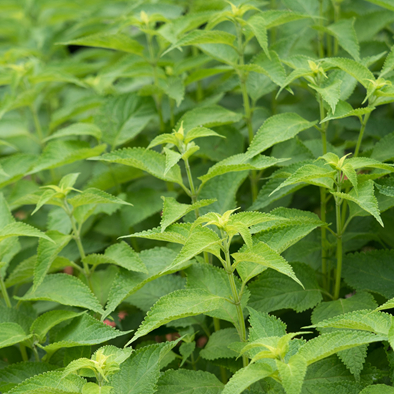
Background
People use Rabdosia rubescens for a mild form of gum disease (gingivitis), an enlarged prostate (benign prostatic hyperplasia, BPH), cancer, and other conditions, but there is no good scientific evidence to support these uses.
Safety Safety definitions
Special Precautions & Warnings:
Pregnancy and breast-feeding: There isn't enough reliable information to know if Rabdosia rubescens is safe to use when pregnant or breast-feeding. Stay on the safe side and avoid use.Effectiveness
- A mild form of gum disease (gingivitis). Early research shows that taking Rabdosia rubescens might reduce symptoms of gingivitis, such as red and bleeding gums.
- Cancer, including prostate cancer.
- Enlarged prostate (benign prostatic hyperplasia, BPH).
- Swelling (inflammation).
- Other conditions.
Dosing & administration
Interactions with pharmaceuticals
Medications changed by the liver (Cytochrome P450 2C9 (CYP2C9) substrates)
Interaction Rating=Minor Be watchful with this combination.
Some medications are changed and broken down by the liver. Rabdosia rubescens might increase how quickly the liver breaks down some medications. Taking Rabdosia rubescens along with some medications that are changed by the liver may decrease the effects of these medications. Before taking Rabdosia rubescens talk to your healthcare provider if you take any medications that are changed by the liver.
Some of these medications that are changed by the liver include diclofenac (Cataflam, Voltaren), ibuprofen (Motrin), meloxicam (Mobic), and piroxicam (Feldene), amitriptyline (Elavil), warfarin (Coumadin), glipizide (Glucotrol), losartan (Cozaar), and others.
Medications changed by the liver (Cytochrome P450 3A4 (CYP3A4) substrates)
Interaction Rating=Moderate Be cautious with this combination.
Some medications are changed and broken down by the liver. Rabdosia rubescens might increase how quickly the liver breaks down some medications. Taking Rabdosia rubescens along with some medications that are changed by the liver might decrease the effects of these medications. Before taking Rabdosia rubescens, talk to your healthcare provider if you are taking any medications that are changed by the liver.
Some medications changed by the liver include lovastatin (Mevacor), ketoconazole (Nizoral), itraconazole (Sporanox), fexofenadine (Allegra), triazolam (Halcion), and many others.
Medications moved by pumps in cells (P-glycoprotein substrates)
Interaction Rating=Moderate Be cautious with this combination.
Some medications are moved by pumps in cells. Rabdosia rubescens might make these pumps less active and increase how much of some medications get absorbed by the body. This might cause more side effects from some medications.
Some medications that are moved by these pumps include doxorubicin, etoposide, paclitaxel, vinblastine, vincristine, vindesine, ketoconazole, itraconazole, amprenavir, indinavir, nelfinavir, saquinavir, cimetidine, ranitidine, diltiazem, verapamil, digoxin, corticosteroids, erythromycin, cisapride (Propulsid), fexofenadine (Allegra), cyclosporine, loperamide (Imodium), quinidine, and others.


